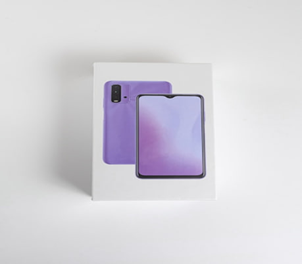Global Smartphone Market: The Shifting Dynamics
The smartphone market has witnessed spectacular growth for over a decade. Past research highlighted the significance of smartphones in the global tech cycle. The smartphone industry has a complex and evolving supply chain across Asia, changing the export and growth performance of several countries. Smartphones have become a key metric of global trade, as they have become the main computing platform for many people around the world. Demand for smartphones is highly cyclical and related to the release of new models. Apple’s iPhone releases are the key determinant of the new tech cycle. However, the recent market trends of the smartphones are defying this notion.

Global Smartphone Market Synopsis
As per the recent report by Counterpoint Research, in October 2023, the global sales of smartphones fell by 8.0% in the third quarter as compared to the last year, also depicting a slower-than-expected recovery in consumer demand. The report also highlighted that both Apple and Samsung are losing market share to competing brands during the period. Additionally, the top five Chinese smartphone makers including Xiaomi, OPPO, and Vivo recorded even steeper smartphone sales declines than Samsung and Apple.
Further, IDC also warned other players in the space. For instance, Qualcomm reduced its revenue forecast fully by $2 billion below market estimates. Qualcomm supplies core silicon to Apple, Samsung, and others. The drop in the revenue forecast of Qualcomm indicates a drop in sales of handsets. Still, smartphone companies are generating hefty revenue and giving rise to healthy competition and the greatest paradigm of all times.
In addition, the Worldwide Quarterly Mobile Phone Tracker forecasted a decline of 9.1% in the cumulative shipment of smartphones, in 2022. As a result, the International Data Corporation (IDC) expected a recovery in smartphone shipment volumes of 2.8% in 2023, reducing the forecast roughly by 0.07 billion units. This was attributed to the effect of the macroeconomic environment including increasing prices on the demand.
In the times of this downfall, companies such as HONOR, Huawei, and Transsion Group gained a share and were among the only brands to record YoY growth in the third quarter. Most developed markets, like North America, Western Europe, and South Korea, recorded steep declines. However, growth is expected in the fourth quarter largely due to the delayed effect of the iPhone launch. Along with the launch of the iPhone 15 series and the arrival of the festive season in India and Christmas, paired with the sales event in China the series of YoY decline is expected to halt.

Huawei was the fastest-growing smartphone maker in China in the third quarter after the company released a smartphone with a surprisingly advanced chip inside. Huawei reported third-quarter sales of 145.7 billion Chinese yuan ($19.9 billion), up by 1% over last year and a net profit margin of 16.0%. The company explained the growth in profit margin due to the latest tranche from the sale of the Honor handset assets three years ago. It said improved efficiencies and optimized sales and product strategies had also had a positive impact on profitability.
Over the past few years, the change in fortunes has been primarily due to the huge growth in markets such as China and India. Chinese brands have capitalized on their home markets and their value-for-money proposition has played well in Indian and Southeast Asian markets. Combined with aggressive marketing and investments in retail networks, India’s market leader Xiaomi has started feeling the pressure. Meanwhile, Apple and Samsung, in particular, are struggling to grow their brands in these markets and are instead reliant on their more traditional but stagnant basis.
IDC forecasted the Android shipment to reach 1.0 billion marking a growth of 3.1% as compared to 2022, and the iOS shipment to reach 0.2 billion growing by 1.3%. Thus, the overall shipment is estimated to reach 1.2 billion with a 2.8% rise over 2022. It also predicts the overall shipment to reach 1.3 billion with 1.1 billion to be contributed by Android and 0.2 billion by iOS. This will account for an overall growth rate of 2.3%, with 2.5% in Android and 1.9% in iOS. The expected 5-year CAGR is 0.5%, 0.4%, and 1.0% respectively.
IDC further forecasted the global smartphone market to remain challenging for the first half of 2023 with recovery in the second half in most regions. Rising costs are a major concern for the smartphone market. A device refresh cycle continues to build in many challenged emerging markets while developed markets have offset rising costs with increased promotional activity, more attractive trade-in offers, and extended financing plans. This has supported the growth of the market despite the economic turmoil.
5G is evaluated to account for just over half of smartphones shipped worldwide, rising to 80.0% by 2026. However, the concerns of consumers to hold on to the 4G phones in order to avoid the expensive 5G phone are also lingering. In addition, market momentum is building around foldable phones. This category was only about 1-2% of the global market in 2022, accounting for roughly 15-16 million smartphones. The number is expected to grow with the decline in prices.
The most compelling attribute of the current trend in the smartphone market is that, despite the market slowdown in terms of sales the revenue of the organizations is steadily rising. This is explained by the rise in the Average Selling Prices (ASPs) of smartphones. As consumers are opting for premium devices that can last three to four years as refresh rates elongate in both developed and emerging markets, the manufacturers are leveraging the opportunity to generate hefty revenues. Furthermore, the smartphone ASPs are expected to grow for the third consecutive year to reach $413.0 from $388.0 in 2021, marking a rise of 6.4%.
The sales of Huawei are increasing but the company is not growing as a whole
Research on the current trends in the smartphone market indicates the return of Huawei to the 5G smartphone industry by the end of this year. As indicated by the Counterpoint Research report Huawei smartphones are giving tough competition to iPhone and Samsung. However, the increasing sales are considered as recovery and not growth as the organization faced huge losses after the US ban. Huawei's consumer business revenue peaked at 483 billion yuan ($67 billion) in 2020, before plummeting by almost 50% a year later. This was attributed to the US restrictions that cut its access to its chip-making tools essential for producing its most advanced models. The US along with several other countries asserted that

Huawei threatens its national security has violated international sanctions stolen intellectual property and could commit cyber espionage. Many US policymakers viewed Huawei as a commercial extension of the Chinese Communist Party. Recently, the organization has returned to the 5G phone market with a bang after being in survival mode for almost three years. Thus, the present feat of Huawei is more a V-shaped recovery than growth.
The Increasing Market Share of the Lesser-Known BBK Electronics
BBK is a Chinese multinational corporation. It owns a number of popular brands across various consumer electronics markets, including headphones, Blu-Ray players, and smartphones. It is the sole owner of the smartphone brands namely OnePlus, OPPO, Vivo, and Realme. Vivo was the first major BBK subsidiary. Vivo’s core business is feature-packed mid-rangers but grabbed headlines with its experimental Apex Concept Phones and the Nex Series.
BBK strategized flexibility across market segments by spreading itself across multiple brands. The strategy has paid off in China. However, BBK Electronics was not satisfied with just having a solid lead in China and focused on growing across India too. The company’s combined brands have already beat Xiaomi in India, which remains a key growth market. Meanwhile, Realme and OnePlus are broadening the company’s horizons outside of Asia, extending to Europe. BBK also launched another brand named iQoo a few years ago. This smartphone sub-brand leverages experience in children’s educational electronic toys to create the world’s first education handset.
In a nutshell, the smartphone market is witnessing some major changes in terms of market leaders. Recent market players like Huawei and BBK Electronics are giving tough competition to well-established brands such as Apple and Samsung. Although, the market is undergoing one of the weirdest trends of all time, the recovery of emerging markets before the global market and the growth of brands outside of the top five indicate the shifting dynamics and opportunities in the global smartphone market.
Note: The shipment figures presented in the article represent the cumulative sales/ shipment for the given period.